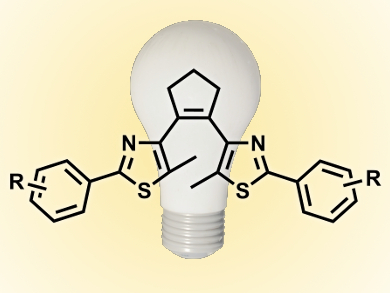Light is a widely used input to reversibly activate switchable photochromic molecules, but can sometimes be detrimental due to side reactions. An example are diarylethenes, a class of well-known light-responsive compounds that can isomerize between the ring-open and closed forms, which may also be irreversibly converted into annulated ring systems.
Stefan Hecht and colleagues, Humboldt University, Berlin, Germany, thoroughly examined various factors related to fatigue in diarylethene switches, including peripheral substituents, bridging units, and heteroaryls. The researchers have found that byproduct formation strongly depends on the electronic properties of substituents, and by introducing electron withdrawing groups, especially fluoro groups, diarylethenes become less susceptible to the competing side reaction.
This study helps solve a longstanding challenge for high performance photochemical switches, which may promote their development in practical applications as molecular electronic devices.
- Improving the Fatigue Resistance of Diarylethene Switches,
Martin Herder, Bernd M. Schmidt, Lutz Grubert, Michael Pätzel, Jutta Schwarz, Stefan Hecht,
J. Am. Chem. Soc. 2015.
DOI: 10.1021/ja513027s




